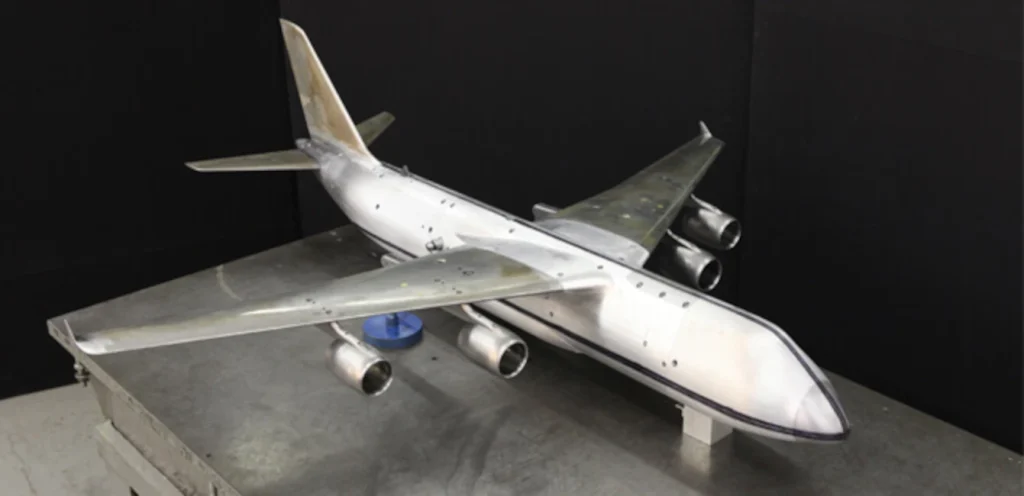Russian heavy lifter An-124 Ruslan has been flying for nearly 30 years. Russia is planning to replace the aircraft with a new project called Slon (Elephant), which is being designed by the Central Aerohydrodynamic Institute of Russia (TsAGI).
If we look at the available materials, visually, “Elephant” is very similar to “Ruslan”. This is not surprising because the aircraft have the same tasks. But the design is new and not an upgraded version of the An-124.
The information about the aircraft was revealed during the MAKS-2017 air show when TsAGI specialists presented the design. The basic characteristics of the plane include –
- Speed - 850 kilometres per hour;
- Carrying capacity – up to 180 tons (“Ruslan” takes on board 120 tons);
- Range (when loading up to 150 tons) – 8 thousand kilometres;
- Range without cargo, but with a supply of fuel – 18 thousand kilometres.
The “Elephant’s” wingspan will be approximately 88 metres. The wings will have folding ends for easier parking and loading and unloading operations.
The aircraft will be powered by four PD-35 turbojet engines, which are also in development. Of course, such a mass will necessitate 14 pieces of a reinforced landing gear.
The cargo compartment will span the entire aircraft length, and loading will be possible from both the rear and the front. One of the aircraft’s advantages is that it will only require a small runway for acceleration and landing (no more than 3 kilometres).
This opulence will be complemented by cutting-edge technology and the most comfortable cockpit.
According to a TsAGI statement released on July 7, 2022, a group of researchers modified the design and general configuration of the proposed aircraft, particularly the fuselage cross-section, to increase the capacity for transporting bulky cargo. If the project is successful, the new freighter will have a cargo capacity of 180 tonnes.

The Russian researchers looked at several options for winglets installed near the trailing edge to find the best one. The experts also modified the aircraft’s wingtips to “ensure high aerodynamic quality” while in flight. The improved aircraft model now has a maximum length of around 2 metres (about 6 feet) and a wingspan of 1.8 metres (about 5 feet).
The removable wingtips of various configurations are given special attention. Experts will be able to select the best option by comparing their impact on the lift-to-drag ratio during testing, according to the TsAGI.
The profile of the engine pylons and nacelle has also been improved, making the plane compatible with the new Russian turbofan engines PD-35.
According to the institute, this aircraft will be designed to transport heavy and bulky cargo over a distance of approximately 7,000 kilometres [4,349 miles] at a speed of 850 kph [528.13 mph], and it has already completed two cycles of testing to study the aerodynamics of the aircraft at different flight speeds.
The new plane design is expected to be tested in a wind tunnel by the end of 2022.
An-124 Ruslan
The An-124 is designed to transport troops, military equipment, and weapons from the deep rear to theatres of military operations, as well as bulky cargo anywhere in the world. In aircraft, composite materials are widely used. The floor is constructed of titanium alloy.
The multi-rack landing gear, which has 24 wheels, allows the aircraft to be used from unpaved runways and to change the parking clearance and fuselage tilt angle, making loading and unloading operations easier.
The An-124 restored the USSR’s leadership in heavy transport aviation, dethroning the Lockheed C-5 Galaxy as the world’s largest aircraft. The An-124 Ruslan aircraft set 21 world records in 1985, including those for carrying capacity (171,219 kg at the height of 10,750 m) and a world record for flight distance (20150.92 km) along a closed route on May 6, 1987.
The first flight of the liner took place on December 26, 1982. Deliveries started in 1987.
Variants
An-124-100. Aircraft An-124-100 for commercial cargo transportation.
An-124A is a modification under development that has improved air handling characteristics, ensuring its operation from 2nd class airfields.
An-124-200/210. In 1999, Antonov, the Russian OJSC Aviastar and the British air transport company Air Foyle prepared and submitted a joint proposal for leasing to the British Ministry of Defense a new version of Ruslan – the An-124-210 aircraft, equipped with RB211-524Н-Т engines (264 kN thrust) by Rolls-Royce.
Flight characteristics
Maximum speed: 865 km/h
Cruise speed: 800 km/h
Ferry range: 16,500 km
Flight range with fuel reserves:
– with a load of 120 tons: 4,800 km;
– with a load of 40 tons: 12,000 km;
Service ceiling: 12000 m
Takeoff run at normal takeoff weight: 2520 m
Engines: 4 turbojet engines D-18T or RB-211-524N-T
Dimensions
Wingspan: 73.3 m
Aircraft length: 69.1 m
Aircraft height: 20.8 m
Wing area: 628.5 sq.m
Crew: 4-6 people, depending on the modification.
Personnel load: up to 88 people
Masses and loads
Maximum takeoff weight: 405,000 kg
Normal takeoff weight: 205,000 kg
Empty weight: 180,000 kg
Maximum fuel weight: 230 tons
